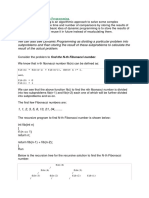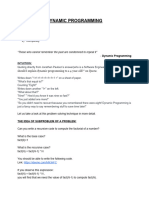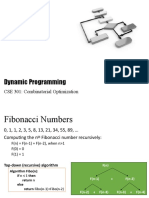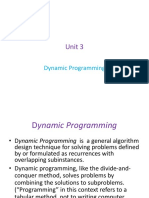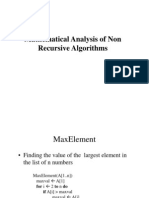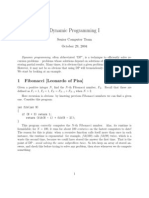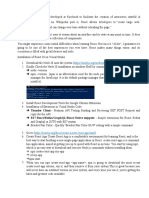0% found this document useful (0 votes)
13 views11 pagesLect 1 DP Introduction
This document introduces Dynamic Programming, explaining its two main approaches: Memoization (top-down) and Tabulation (bottom-up). It uses the Fibonacci sequence as an example to illustrate how to optimize recursive solutions by storing previously computed results to avoid redundant calculations. The document also discusses space optimization techniques to reduce the space complexity of the solution.
Uploaded by
Man KillerCopyright
© © All Rights Reserved
We take content rights seriously. If you suspect this is your content, claim it here.
Available Formats
Download as DOCX, PDF, TXT or read online on Scribd
0% found this document useful (0 votes)
13 views11 pagesLect 1 DP Introduction
This document introduces Dynamic Programming, explaining its two main approaches: Memoization (top-down) and Tabulation (bottom-up). It uses the Fibonacci sequence as an example to illustrate how to optimize recursive solutions by storing previously computed results to avoid redundant calculations. The document also discusses space optimization techniques to reduce the space complexity of the solution.
Uploaded by
Man KillerCopyright
© © All Rights Reserved
We take content rights seriously. If you suspect this is your content, claim it here.
Available Formats
Download as DOCX, PDF, TXT or read online on Scribd
/ 11







